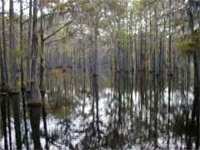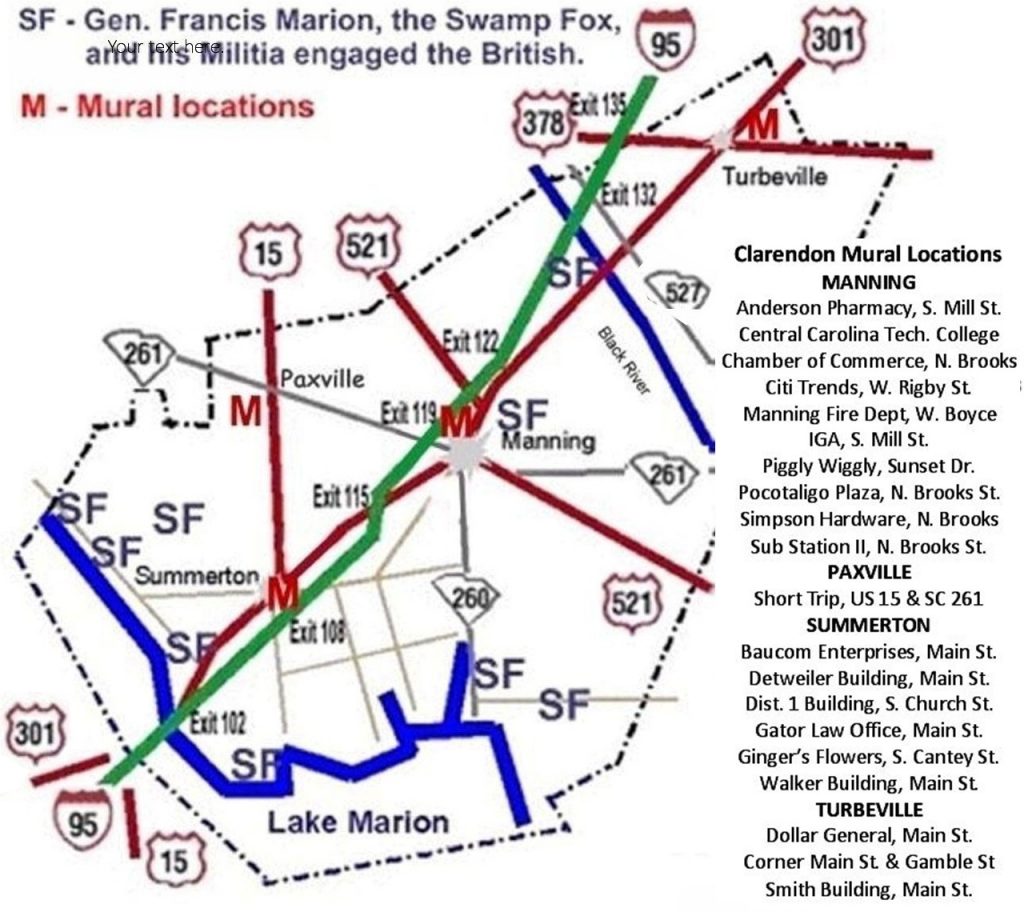Revolutionary War, Southern Campaign
With General Francis Marion, The "Swamp Fox"
The American Revolution was deadlocked in the north, after the Battle at Monmouth Courthouse, NJ, June 28, 1778.
These Swamp Fox engagements were after Charleston fell and the British occupied it starting on May 12, 1780.
Georgetown was captured July 1, 1780. Camden was taken by the British August 16, 1780.
Marion had escaped capture and was the only senior Regimental or Continental Officer free to lead the local militia.
Here are the Revolutionary War happenings around the Santee & Black Rivers in chronological order 1780-1781:
The Burning of Mouzon's
August 7, 1780
Directions: I-95 Exit 132, Hwy 527, Black River Road, towards Kingstree
Capt. William Henry Mouzon II was educated in France and spoke the language fluently. He became a surveyor and civil engineer. Henry Mouzon had known Banastre Tarleton from their boyhood days; yet so callous had Tarleton grown from a sense of duty to his King that he burned the Mouzon Plantation House, on August 7, 1780. His daughter Ann recounted the day the British arrived. She was eleven years old and was outside the house at the time. Ann was the first to see the British coming and sounded the alarm to the rest of the family. The Mouzon home was at Mouzon’s Landing, located at Puddin’ Swamp on the Black River where Mouzon escaped into the swamp. His home was on the edge of St Marks Parish, when Tarleton’s Green Dragoons burned it. Following this, British Major James Wemyss burned out Patriots & Loyalists alike in a swathe 15 miles wide of the 70 miles route from Kingstree to Cheraw along the Black River in 1780.
- Historic Marker for Captain Wm. Henry Mouzon.
- For map & personnel involved in engagement, see JD Lewis slide 38
- Mouzon event.


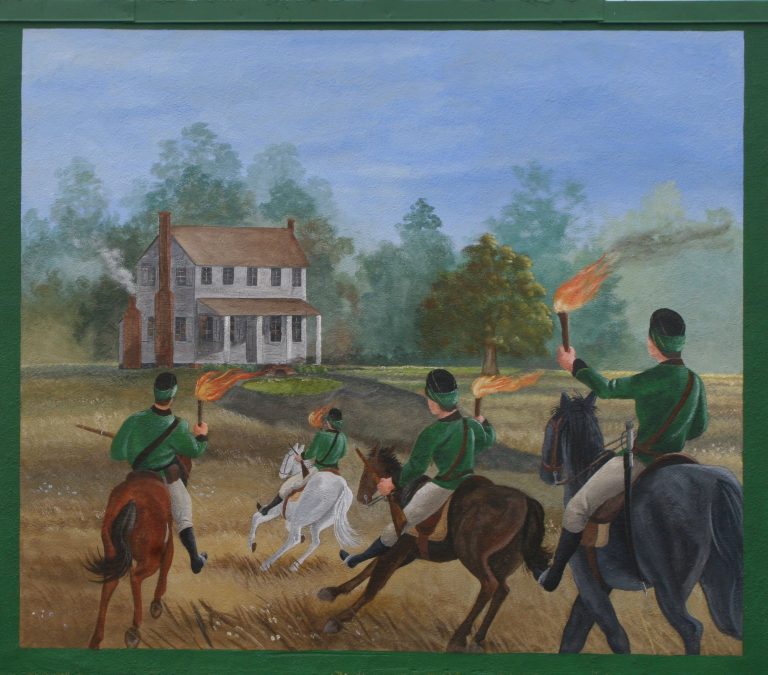

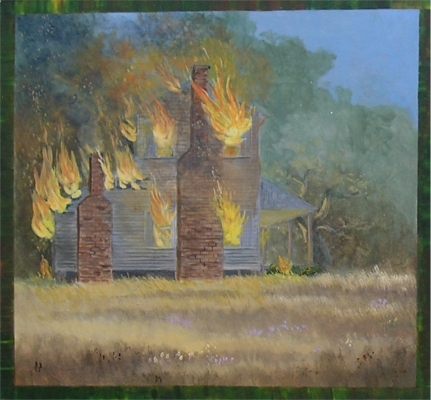

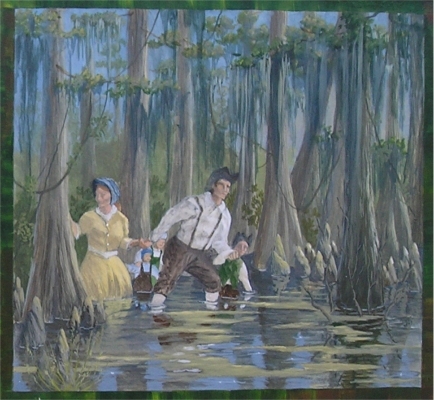

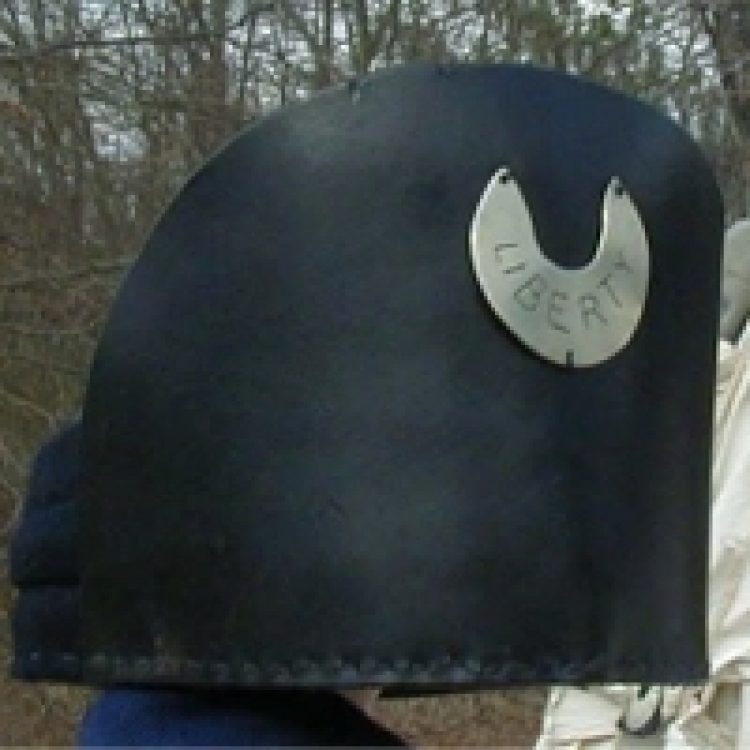

Battle of Nelson's Ferry or Great Savannah
Thursday, August 24, 1780
Directions: Southeast of Summerton, I-95 Exit 102, take Dingle Pond Road (SR 400) east about 4.5 miles. Unmarked site is on Santee Wildlife Refuge, Pine Island Unit, and requires walking.
The stage for this battle was set when the British Lord Cornwallis defeated General Horatio Gates in a battle near Camden. Baron De Kalb was killed and about 150 Marylanders were taken prisoner by the British. General Marion was ordered by Gates to roam the Santee River burning boats so as to isolate Camden from Charleston. He was successfully engaged in this task when he learned of the defeat at Camden August 16, 1780. He withheld this information from his sixty troops and continued to burn boats. He learned from a deserter that a British Capt. Roberts with an escort of ninety troops was holding the 150 Maryland prisoners at General Thomas Sumter’s home, on the north savannah of the Santee River near Nelson’s Ferry. He attacked after dark and killed or captured twenty-three of the escorts and released all the prisoners, most of whom elected not to join Marion’s Militia. This is thought to be the first time Cornwallis heard of General Marion.
- For map & personnel involved in engagement, see JD Lewis slide 31
- More – Nelson’s Ferry
General Thomas Sumter's Plantation on the Santee
Directions: I-95 Exit 102, take Dingle Pond Road (SR 400) east approximately 5 miles on Santee NW Refuge, Pine Island Unit and requires walking.
General Thomas Sumter’s vast land holdings and home were located on a bluff overlooking the Santee Basin about six miles from Nelson’s Ferry. This was the 2nd location he lived in and the one used during the Revolution and it was burned by Tarleton. Sumter’s first home was 1 mile NW of Eutaw Springs, SW of Nelson’s Ferry, and his last holdings were at Stateburg.
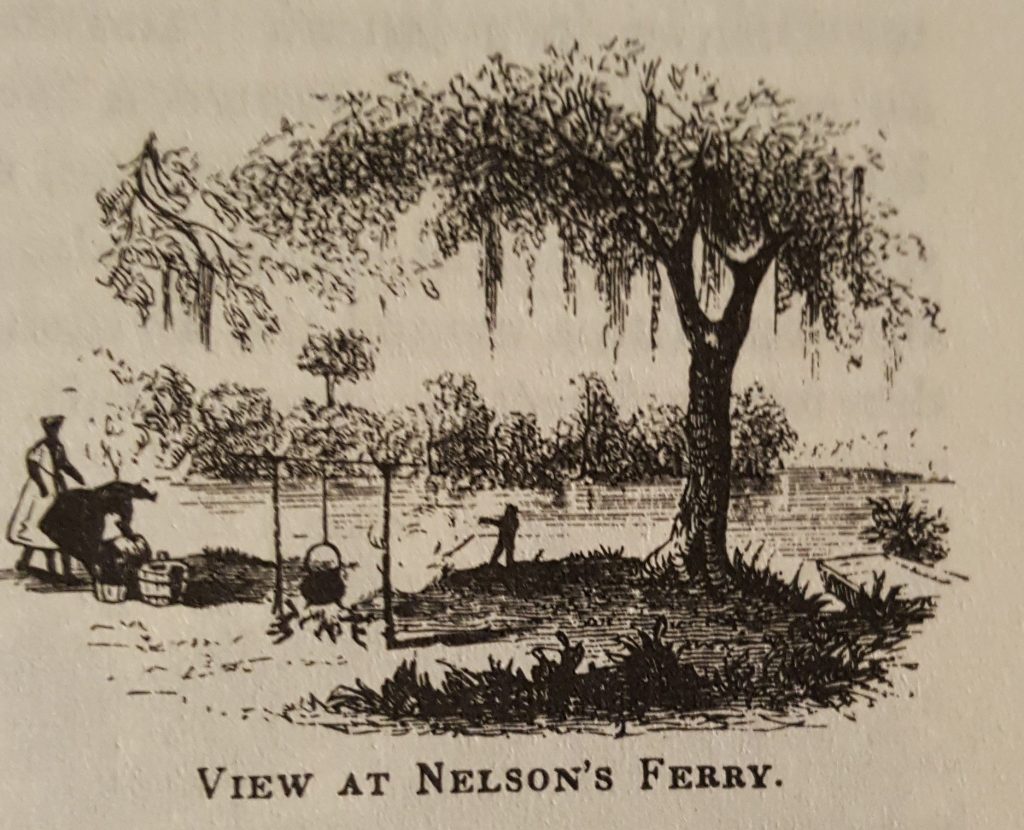



Ride to North Carolina
Sept 8-24, 1780
Following Marion’s victories at Nelson’s Ferry and the Blue Savannah, the British were angry. Cornwallis ordered available forces, over 1500 men, to go after Marion and his 60 men. Marion, who was guarding Port’s Ferry on the Pee Dee expected such a move and sent Major James with a cavalry detachment to snatch a British soldier so they could question him. Thus, Marion learned he was greatly outnumbered so he broke camp and moved to the Great White Marsh of North Carolina. On his return, he gathered his followers and his first action resulted in the victory over Col. Ball at Black Mingo on September 28th. The Citizen Soldier mural depicts Marion gathering men as he returns from NC. Citizen Soldier Mural at SW corner of Sunset Dr. (US 301) and Mill St. (SC 260), Manning, SC. Mural ©2003
A Horse For Francis Marion
Sept. 28-29, 1780
Marion, back in SC, attacked Col. Ball at Black Mingo, Mouzon was wounded. Francis Marion and his men needed horses for the way they fought and his guerrilla tactics throughout this Santee & Black River area. It was important for Marion to have a strong horse. Marion found exactly what he needed.
At Black Mingo Creek, in Williamsburg County, just east of Kingstree. Sept 28-29, 1780 Marion militiamen attacked Col John Cummins Ball, a Tory, & his men at Black Mingo. He captured Col. Ball’s horse & rode him the rest of the war and long after and called him “Ball”.
For map & personnel involved in engagement, see JD Lewis slide 46 or this event.
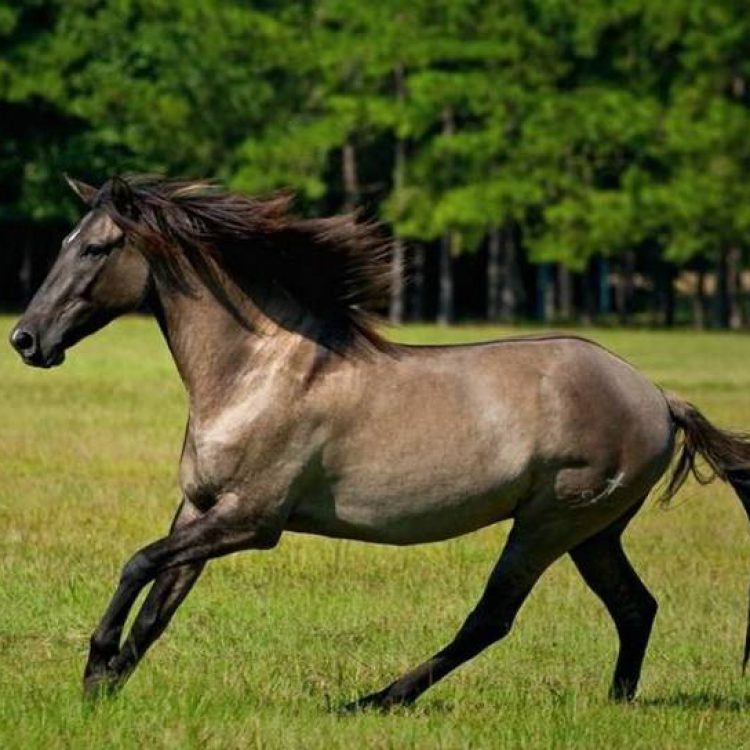

Directions: I-95, exit 132, South of Turbeville, take Black River Road (SC 527) East to Historic US 301. Go South on US 301, West on N. Brewington Rd (SR 50). The battle area is about .5 mile East of I-95
While billeted near Waccamaw, General Marion learned Colonel Tynes with a party of over ninety Tories passed through Camden where they drew supplies and new muskets. They were now camped at the edge of Tearcoat Swamp, between the two forks of the Black River.
Marion called a muster and with 150 men moved to Kingstree. He then turned west and moved swiftly toward Tearcoat. After scouting the encampment Marion split his force into three companies and attacked at midnight. The attackers killed six, wounded fourteen and captured twenty-three men. They also captured the food, baggage, ammunition, over eighty new muskets and horses with saddles. However, Tynes escaped, but was captured a few days later in the High Hills (near Stateburg).
- For map & personnel involved in engagement, see JD Lewis slide 49-52
- This event
- Tearcoat historic marker: 33° 48′ 51″ N 80° 08′ 33″ W
- Professor Joe Stukes recounts Francis Marion History.
Battle of Tearcoat
Wednesday, October 25, 1780


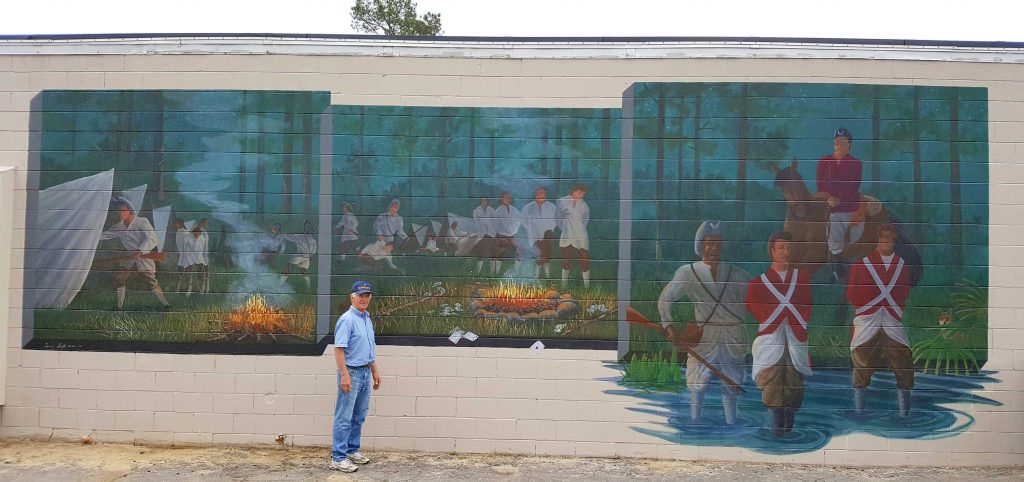

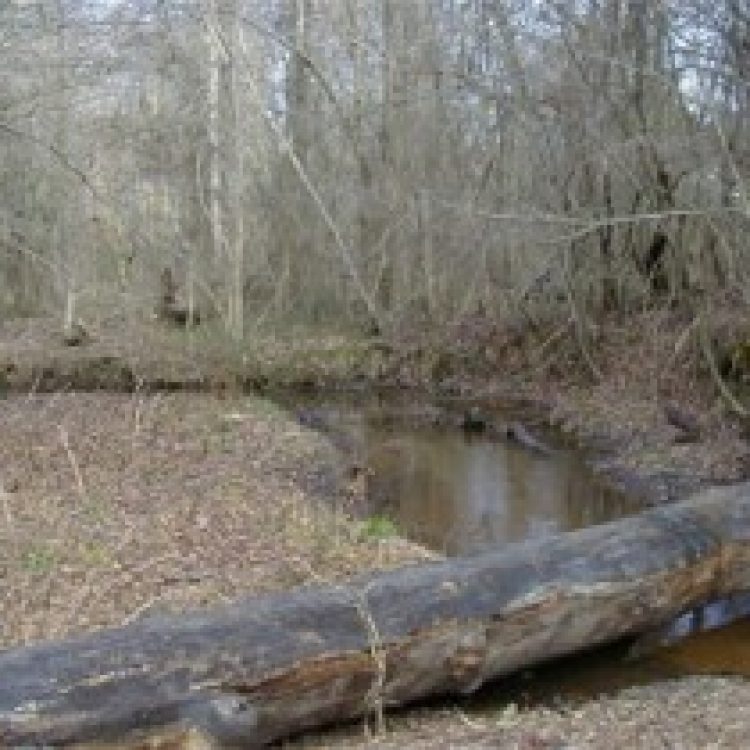



Directions: I-95 Exit 108, from junction of Historic US 301 and US 15 in Summerton go west on Gov. Richardson Road (SR 26), to Bud Ross Road (dirt). Site is on the Furse Branch just west of Jack’s Creek. (near 33.6240° , -80.3838° )
Colonel Banastre Tarleton with the Green Dragoons left Charleston to hunt down General Marion. Tarleton went to the late General Richardson’s home, bivouacked and lit several huge fires. General Marion, attracted by the light, began scouting the area. Mrs. Richardson sent her son Richard to warn Marion. When Marion learned of the ambush Tarleton had prepared he quickly withdrew to the east of Jack’s Creek, most likely to the area near Richbourg’s Mill and plantation, about 5 miles.
For map & personnel involved in engagement, see JD Lewis slide 54.
Pursuit to Ox Swamp
Wednesday, November 8, 1780
Directions: I-95 Exit 119 – go east on SC 261. I-95 Exit 122 – go east on US 521. The road crosses Ox Swamp just east of Manning. Upon learning from a Tory spy that General Marion slipped back east of Jack’s Creek, Tarleton gave chase with his Green Dragoons. Marion, staying just ahead of the dragoons, and fighting a series of delaying tactics with his rear guard, rode to the head of Jack’s Creek, Sammy Swamp and then down the Pocotaligo and slipped away into Ox Swamp, about 26 miles. Here Tarleton gave up the chase and said “as for the old fox, the devil himself could not catch him.” Thus, General Francis Marion became known as the “Swamp Fox”. Marion and his men had continued east to Benbow’s Ferry on the Black River where he had established the ambush for the British.
- FMTC marker: Ox Swamp & the Pocotaligo: 33° 41′ 32″ N 80° 12′ 03″ W.
- SC ETV “Chasing the Swamp Fox“ on-line.
On Nov. 8, 1780, after a seven-hour, 26 mile chase, of Col. Francis Marion by Lt. Col. Banastre Tarleton, he, Tarleton, gave up at Ox Swamp, just a few miles short of Benbow’s. Col. Francis Marion’s band of Patriots remained at Benbow’s Ferry on the Black River where he had prepared his ambush for Lt. Col. Tarleton – however, Tarleton never came, but instead began burning homes in the vicinity, including the home of Mrs. Richard Richardson and all her livestock, grain & barn.
- Benbow’s Ferry Site
- Directions: East of Manning on SC 261. Left, north, onto S-55 at Martine Crossroads.
- The ferry was located just east of where the bridge crosses the Black River.
- Marion positioned his force in an ambush for Tarleton along the approach to the ferry.
- Mural of this event, West wall of Piggly Wiggly, Manning, SC.
Ambush Set at Benbow's
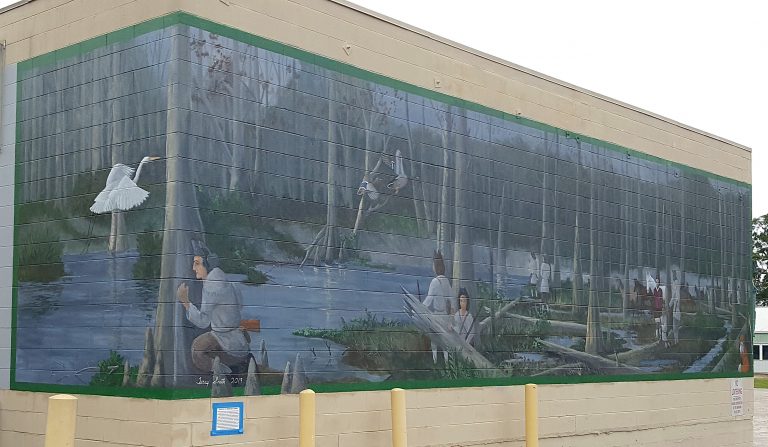

Directions: South of Summerton, I-95 Exit 102 north on Historic US 301. At St. Paul turn west on Liberty Hill Road (SR 373), then left onto Old River Road (SR 76). Site is on the left just past Elliott’s Mill Pond and Spring Grove Creek.
Major McLeroth and his British Regular troops met at Nelson’s Ferry recruits for the Royal Fusiliers, who departed Charleston for Camden. McLeroth was to escort them to the High Hills. General Marion with 700 troops intercepted McLeroth’s group and began driving in the pickets. Under a flag of truce McLeroth complained and after they talked, it was decided each side would field twenty men to face off and fight. Major Vanderhorst and the picked twenty decided to wait until they were fifty yards away to fire their buckshot. As they closed to less than 100 yards, the Redcoats broke and ran. During the night the British stole away, leaving their equipment and supplies behind. Marion sent James and his cavalry after them. James fired on the British at Singleton’s Mill but quickly departed the mill area when he learned the Singletons had smallpox. Dec. 26, 1780, Lt. Col. John Watson Tadwell Watson and the British 64th Regiment of Foot troops started building Fort Watson on the Santee Indian Mound.
- Find this Half-Way Swamp FMTC historic marker: 33° 39′ 15″ N 80° 29′ 43″ W
- JD Lewis research on this 20 men face-off event.
First Battle of Fort Watson
Tuesday, Feb. 27, 1781
Directions: South of Summerton, I-95 Exit 102. Historic US 301 north, turn west onto Fort Watson Road (S- 803). Marker at the Visitors Center and the Indian Mound, site of Fort Watson, is at the end of the road.
General Thomas Sumter had attacked Fort Watson atop the Indian Mound on February 28, 1781, attempting to take it from the British.
- For more on this event with Thomas Sumter see JD Lewis’ Carolana.com
The next sequence of events comprise the Bridges Campaign or Watson Pursuit (March 6-28, 1781)
Battle of Wyboo Swamp
Tuesday, March 6, 1781
Directions: I-95 Exit 115. Take Historic US 301 north. Turn south (right) onto SC 260. Turn right on Patriot Road (SR 410). The site is at the end of the road.
Lt. Col. John Watson Tadwell Watson and Colonel Welbore Ellis Doyle were sent to encircle and crush General Marion. Early on March 5, Watson and his Buffs marched from Fort Watson down the Santee Path and bivouacked near Nelson’s Ferry. Marion heard their location from his spy, Capt. Zach Cantey.
His men knew they must fight to prevent the enemy from continuing to overrun their homes and farms. Marion ordered his troops to advance and set up an ambush, at Wyboo Swamp, a difficult pass on the Santee Road. The British marched into view and out rode Watson to survey the scene. Out rode Marion to face his opponent. The quarter mile causeway spanned the muck and morass of Wyboo swamp. Watson, towering and majestically uniformed, sitting a splendid charger and backed by Britain’s finest soldiers, opposite the small Huguenot, sitting a sorrel gelding and backed by farmers in homespun.
Watson opened the battle. He sent Col. H Richborg and his Loyalist horsemen thundering over the causeway. Anticipating this, Marion sent Peter Horry and his horsemen to meet them. After a brief skirmish on the narrow roadway, both sides recoiled. Marion again ordered Horry to charge. Watson’s regulars held. A fusillade of grapeshot sent Horry’s cavalry reeling backward.
Watson threw in the Tory dragoons. Gavin James, powerful of frame and fierce of courage, turned back to dispute Harrison’s passage. Mounted on a gray horse and armed only with musket and bayonet, he threw himself directly in the path of the dragoons. Their foremost man he dropped with buckshot. Before he could reload, a dragoon rushed him with his saber. James slew him with his bayonet, and a second with the same bayonet. In falling he seized the barrel of James’ gun and for 50 yards in his retreat Gavin James dragged the dying Tory. As the dragoons crossed the causeway, Marion’s militia charged, driving the Tories back across Wyboo. Watson ordered his Guards to clear the passage. Marion knew his men could not stop the veterans and called them to mount and retreat. Marion withdrew to a position near the John Cantey Plantation (near the family cemetery).
Find Wyboo Swamp historic marker: 33° 32′ 22″ N 80° 13′ 04″ W
- JD Lewis with www.Carolana.com covers the “Bridges Campaign” from Wyboo to the Sampit with maps:
- Clarendon County, Wyboo Swamp engagement & Cantey’s Plantation the next day.
- Williamsburg Co. Mount Hope Swamp, March 8, 1781.
- Williamsburg Co. Witherspoon’s Plantation. March 12-13, 1781.
- Williamsburg Co. Kingstree, Black River Bridge. March 14-15, 1781.
- Williamsburg Co. Blakely’s Plantation. March 15-16, 1781
- Georgetown Co. Sampit Bridge. March 20. 1781.
- Or similar version: March 28. 1781.
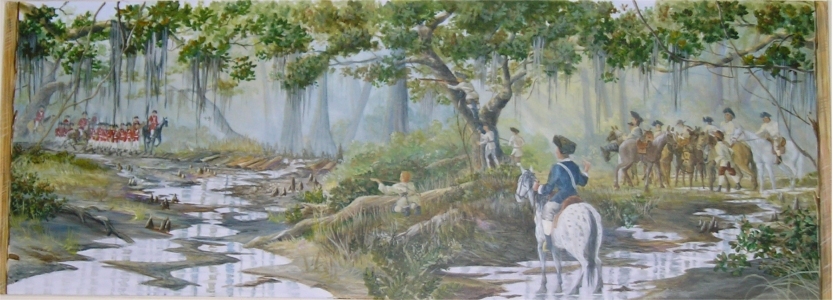

Battle of Wyboo Swamp Mural (1 of 3 panels), Manning. Wyboo Mural ©2006
Mount Hope Swamp in the Bridges' Campaign
March 10-28, 1781
Directions: South of Manning, south on SC 260, left on Kenwood Road (S-323). Large brick and metal gate on the right, south side, of the road mark John Cantey’s Plantation.
Colonel Watson encamped at the Cantey Plantation on March 9th. He then attempted to join Doyle who was moving from Camden down the Pee Dee north of the Black River. At Mount Hope Swamp Watson met severe harassment from the Swamp Fox and his men. He again met stiff resistance at the Lower Bridge over the Black River and was unable to cross the river to reach Kingstree. He then camped at the Witherspoon and the Blakely plantations but was forced to head for Georgetown. He was ambushed and stopped at Ox Swamp and then made a dash for Georgetown via the Old River Road. When the British reached the Sampit River, General Marion ambushed them. Watson had suffered many casualties at every encounter and leaving his dead where they fell, he arrived at Georgetown with two wagons filled with wounded soldiers. See Bridges Campaign in links above
Siege of Fort Watson
Monday to Monday, April 16-23, 1781
Directions: I-95 Exit 102, South of Summerton. Historic US 301 north, turn west onto Fort Watson Road (S-803). Markers are at the Indian Mound, site of Fort Watson, at the end of the road.
Colonel Harry Lee and Lee’s Legion from Virginia had joined General Francis Marion and Marion’s Brigade on the Black River on April 14, 1781. Marion and Lee elected to capture the British fort, built in December 1780, Fort Watson on the Santee River and beside Scott’s Lake, to secure the area and to get badly needed supplies. They laid siege to the fort. The cannon never arrived. “Col. Maham contrived to raise a tower of logs, so high that it overtopped the fort.” The tower was erected over night after collecting saplings for several days. The use of the tower by the McCottry riflemen at sunrise led to the quick surrender of Fort Watson by Lt. James McKay on the morning of April 23, 1781 and was the final Battle of Fort Watson.
- Fort Watson mural
- Fort Watson mural is on the North facing wall of Summerton Hardware, Main Street.
- Fort Watson Historic marker
- Former Crypt cover, Marion stone
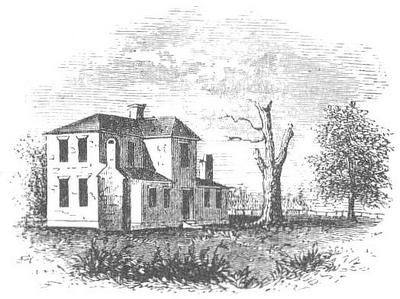

Fort Motte
May 8, 1781 Marion and Lee arrived at Fort Motte.
The Rebecca Motte home was located on the south side of the Congaree River just west of the Congaree & Wateree joining to form the Santee River.
Marion’s militia along with Lee’s Legion, laid siege to Fort Motte May 8th, 1781. They dug trenches to get closer to the home the British had fortified. On May 12 the Patriots asked & Mrs. Motte agreed, they would set fire to the house. A bow & arrows or pitch balls were used to set the wood shingles on the roof on fire. As the roof started to burn the British surrendered & both groups worked to put it out. That evening Mrs. Motte had dinner cooked for the officers from both sides.
While eating, Gen. Marion was told some of Lee’s men were hanging the British prisoners. Marion immediately stopped this action & protected the prisoners.
May 12, 1781 Patriots, led by Francis Marion and Henry Lee, captured the British post known as Fort Motte (at Rebecca Motte’s Mount Joseph plantation, sketch from BJ Lossing in 1840s).
The British had used Fort Motte as another of the outposts to guard Charles Town.
Statue
General Francis Marion in St. Mark’s Parish, now Clarendon County, is in the Continental uniform of his 2nd SC Regiment after he occupied Georgetown, June 6, 1781.
Marion statue is sponsored by the Swamp Fox Murals Trial Society.
Come to Manning to see Francis Marion in the Clarendon County Chamber of Commerce window, 19 N. Brooks Street.
These Swamp Fox engagements were after Charleston fell and the British occupied it starting on May 12, 1780. Marion had escaped capture and was the only senior Regimental or Continental Officer free to lead the local militia. Find this statue: 33.696° N 80.211° W


First South Carolina Flag
British held Fort Johnson, built on James Island in 1747 to protect Charlestown, was attacked by South Carolina patriots in 1775. Lt Col Motte’s unit finally reached Fort Johnson the morning of 14 Sept 1775, but found it abandoned. The Patriots quickly prepared to defend the fort. Col Moultrie asked the Council of Safety what flag should be flown over the fort. The Council said to make one. Col Moultrie wrote that, “I was desired by the council of safety to have one made, upon which, as the state troops were clothed in blue, and the fort was garrisoned by the 1st and 2nd regiments, who wore a silver crescent on the front of their caps, I had a large blue flag made with a crescent to be in uniform with the troops.” So this flag was carried by Colonel William Moultrie’s South Carolina State Troops on Sullivan Island in Charlestown Harbor on June 28, 1776. The British were defeated that day, keeping the south from British occupation for another two years. Some versions of this flag have the word “LIBERTY” in the crescent.
Fort Sullivan, “Palmetto Fort”
June 28, 1776
To increase the security of the Charlestown harbor, in February 1776, the Council of Safety of South Carolina directed Colonel Moultrie to build a for on Sullivan’s Island. On the morning of June 28th the British fleet was positioned to attack the fort that was only about half finished. The fort was being built using palmetto trees and sand. Many people thought the palmetto logs were not suitable to withstand an attack. At about 11:00 o’clock in the morning Commodore Parker signaled the British ships to start firing their cannons at the fort. Some of the shells were 13 inches in diameter. The ships came as close as 400 yards (4 football field lengths) from the fort as they attacked. The palmetto logs stopped the British cannon balls. The British sailed away after they lost several ships and many sailors were killed and wounded.
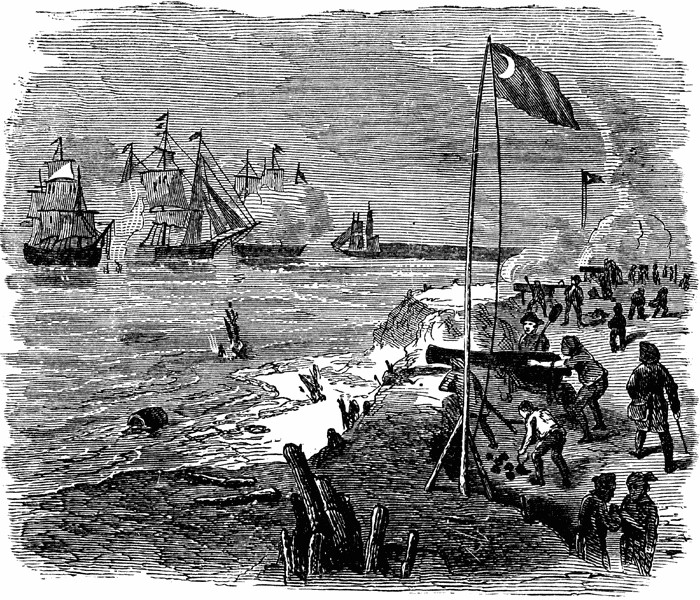

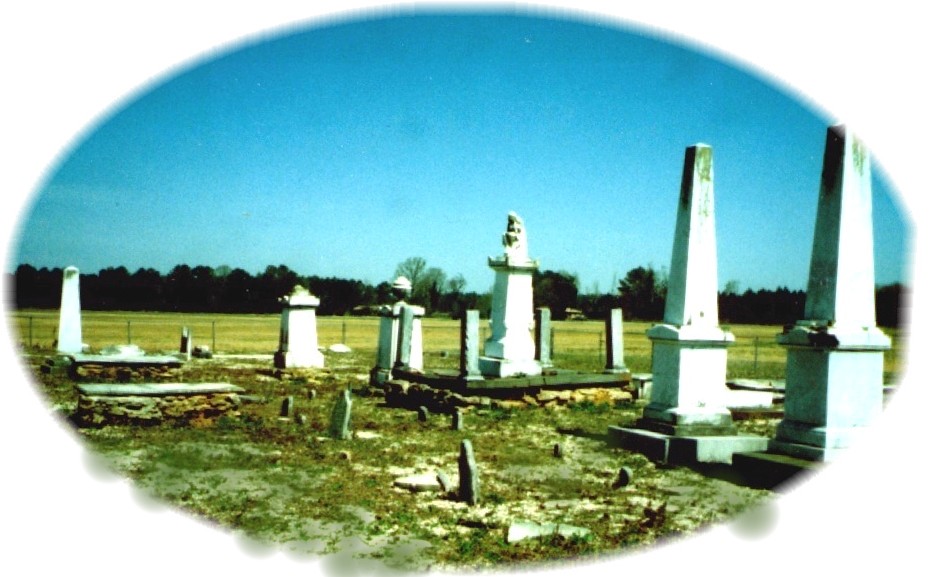

General Richardson, Richardson Cemetery and St Mark's Parish Church
Directions: I-95 Exit 102 north on Historic US 301. At St. Paul turn west on SR 373, then left onto SR 76. Site is on the left just past Richardson Branch. Richard Richardson had come from Virginia as a land surveyor in the 1750’s; he was granted 1,000 acres in Craven County in St. Mark’s Parish on the north side of the Santee River & acquired many more. He was a colonel of militia in 1757 & he was in the Cherokee War of 1760-1761 and the Snow Campaign, the winter 1775-1776. He was taken prisoner when Charlestown was captured 1780, but send to his family home from illness, late 1780. Likely on November 8, 1780, and recorded in The Chronicles of St. Mark’s Parish, Colonel Banastre Tarleton ordered Richardson’s body to be taken up, left exposed, Tarleton’s pretext was that “he might examine the features of a man of such decided character.” This punishing the family and other Patriots for helping General Marion. Two SC governors and the founder of The Citadel are also buried here at this historic site. St. Mark’s Parish Church was located near here when the British burned it as they considered the church “a sedition shop”.
|
Francis Marion and the Sweet Potato Story
Francis Marion was in his camp near Snow Island on the Pee Dee River with his Militiamen. A British officer visited with Marion under a flag of truce to negotiate an exchange of prisoners. Marion offered him a meal consisting of sweet potatoes cooked in the ashes of the campfire and water to drink. The British officer returned to Charlestown and refused to fight against an enemy ( the Patriots) as dedicated as Francis Marion, “who ate roots cooked in a fire and drank nothing but water from the swamp.”
There are about 12 different paintings that depict this event. All these paintings or etchings were done after General Marion died. The sweet Potato story from the US Senate.


Cantey Plantation
Directions: South of Manning, I-95 Exit 119 east on SC 261, south on SC 260, east on Kenwood Road (S-323). Large brick and metal gate on the right, south side, of the road mark Plantation.
John Cantey’s home was about halfway between Nelson’s Ferry and Murray’s Ferry. Gen. Marion was staying here when he learned that General Cornwallis surrendered at Yorktown on October 19, 1781. Joseph Cantey, John’s father, purchased the Mount Hope Plantation about 1739. It was located east of John’s near the present Cantey Cemetery.
Nov. 10, 1781, Saturday, Celebration party at John Cantey’s: “a fine party for the ladies of Santee”
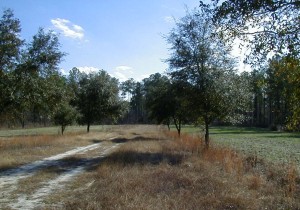

British evacuation of CharlesTown, SC
Dec 14, 1782
Victory Day – the successful conclusion of the Revolutionary War marked by the end of hostilities between the American Armyand the surrounded British forces occupying Charleston; Celebrated at Marion Square.
(Marion didn’t come to Charleston for this in 1782, his men/Militia were not invited, so he told them he was not coming, probably with the threat of smallpox.)
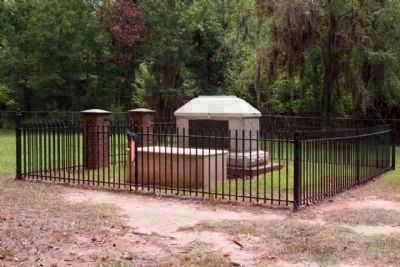



| # On Clarendon Map | Date | Location |
| 1 | 1780-08-17 | Nelson’s Ferry |
| 2 | 1780-08-25 | Great Savannah |
| 7 | 1780-10-25 | Tearcoat |
| 8a | 1780-11-08 | Jack’s Creek |
| 8b | 1780-11-08 | Ox Swamp |
| 13 | 1780-12-12 | Halfway Swamp |
| 14 | 1780-12-13 | Singleton’s Mill |
| 16 | 1780-12-17 | Santee River Rd |
| 22 | 1781-03-06 | Wiboo Swamp |
| 23 | 1781-03-06 | Cantey Plantation |
| 24 | 1781-03-13 | Mt. Hope Swamp |
| 37 | 1781-04-15 | Fort Watson |
| 41 | 1781-08-16 | Santee River |
| 44 | 1781-09-08 | Eutaw Springs |
| 54 | Richardson Cemetery | |
| 55 | 1795-02-27 | Marion’s Tomb |
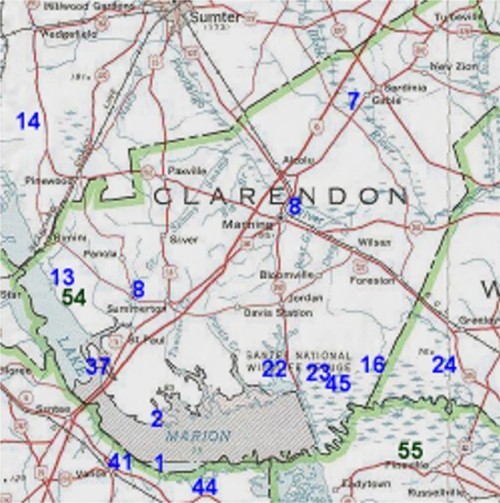

Clarendon County, SC with site names, numbers & dates.
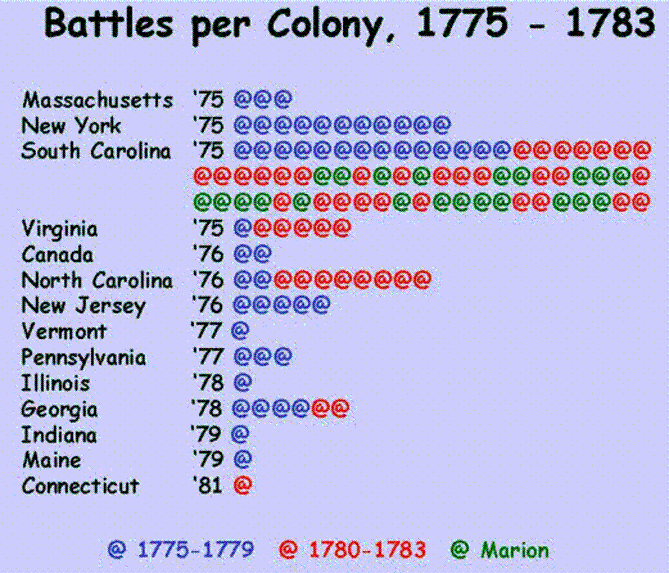

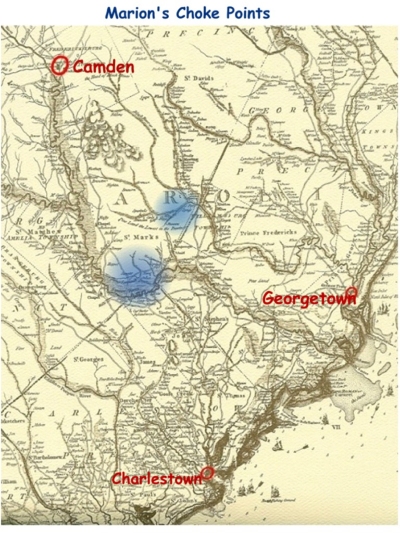

Choke points on the Santee River & Black River where Marion cut the British supply lines.


